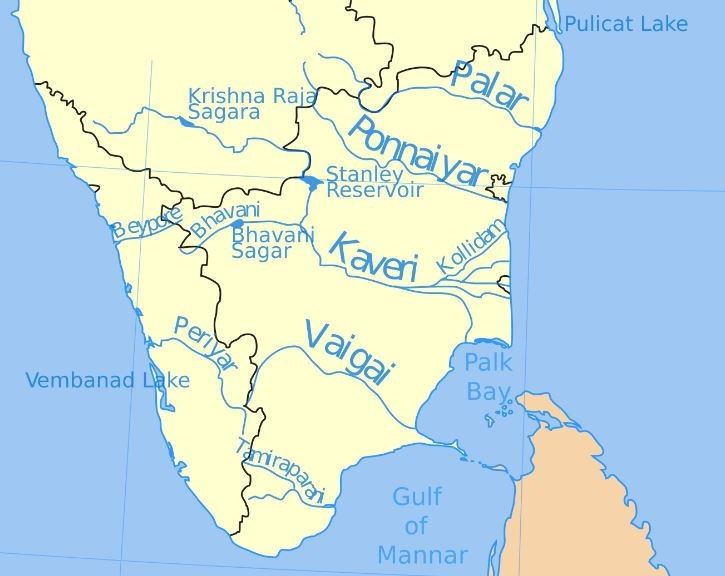Indian History
Thamirabarani Civilisation: Tamil Nadu
- 11 Sep 2021
- 3 min read
Why in News
The Thamirabarani civilisation in Tamil Nadu is at least 3,200 years old, reveals carbon dating done on organic material retrieved from archeological excavations in Sivakalai, Thoothukudi district.
- Carbon Dating: The determination of the age or date of organic matter from the relative proportions of the carbon isotopes carbon-12 and carbon-14 that it contains.
Key Points
- Thamirabarani River:
- The shortest river in the state (Tamil Nadu), the Thamirabarani starts in Pothigai hills of the Western Ghats in the Ambasamudram taluk, flows through Tirunelveli and Thoothukudi districts and empties at Korkai (Tirunelveli district) into the Gulf of Mannar (Bay of Bengal).
- Significance of the Findings:
- It could lead to evidence that there was a city civilisation (Porunai River (Thamirabarani) civilization) in south India as long back as 3,200 years ago, the later part of the Indus Valley Civilisation.
- Also, archaeological excavations would be carried out in other States and countries in search of Tamil roots.
- In the first phase, studies would be undertaken at the ancient port of Muziris, now known as Pattanam, in Kerala, to establish the ancientness and culture of the Chera empire.
- Research would be conducted at Quseir al-Qadim and Pernica Anekke in Egypt, which were once part of the Roman empire, as well as in Khor Rori in Oman, to establish the Tamils’ trade relations with these countries. Potsherds bearing Tamil scripts have been found in these countries.
- Studies would also be conducted in Southeast Asian countries, such as Indonesia, Thailand, Malaysia and Vietnam, where King Rajendra Chola had established supremacy.
- The three ruling houses of Tamil India, the Pandyas, Cheras, and Cholas, fought for supremacy of southern India and Sri Lanka. These dynasties promoted early literature on the Indian subcontinent and built important Hindu temples.
- Sangam literature, which was written over a period of six centuries (3rd BCE – 3rd CE) contains references to various Chola, Chera and Pandya kings.
- Other Recent Findings:
- A silver punch marked coin was recently excavated from Keezhadi (Tamil Nadu) which bore the symbols of the sun, the moon, the taurine and other geometrical patterns.
- Studies on this found the coin to date back to the 4th century BC, which is before the time of the ancient Maurya empire (321-185 B.C.E).
- Archaeological excavations are being done at numerous places such as Kodumanal, Keeladi, Korkai, Sivakalai, in Tamil Nadu.
- As per the carbon dating of artefacts, the Keeladi civilisation dates back to 6th century BC.
- A silver punch marked coin was recently excavated from Keezhadi (Tamil Nadu) which bore the symbols of the sun, the moon, the taurine and other geometrical patterns.





